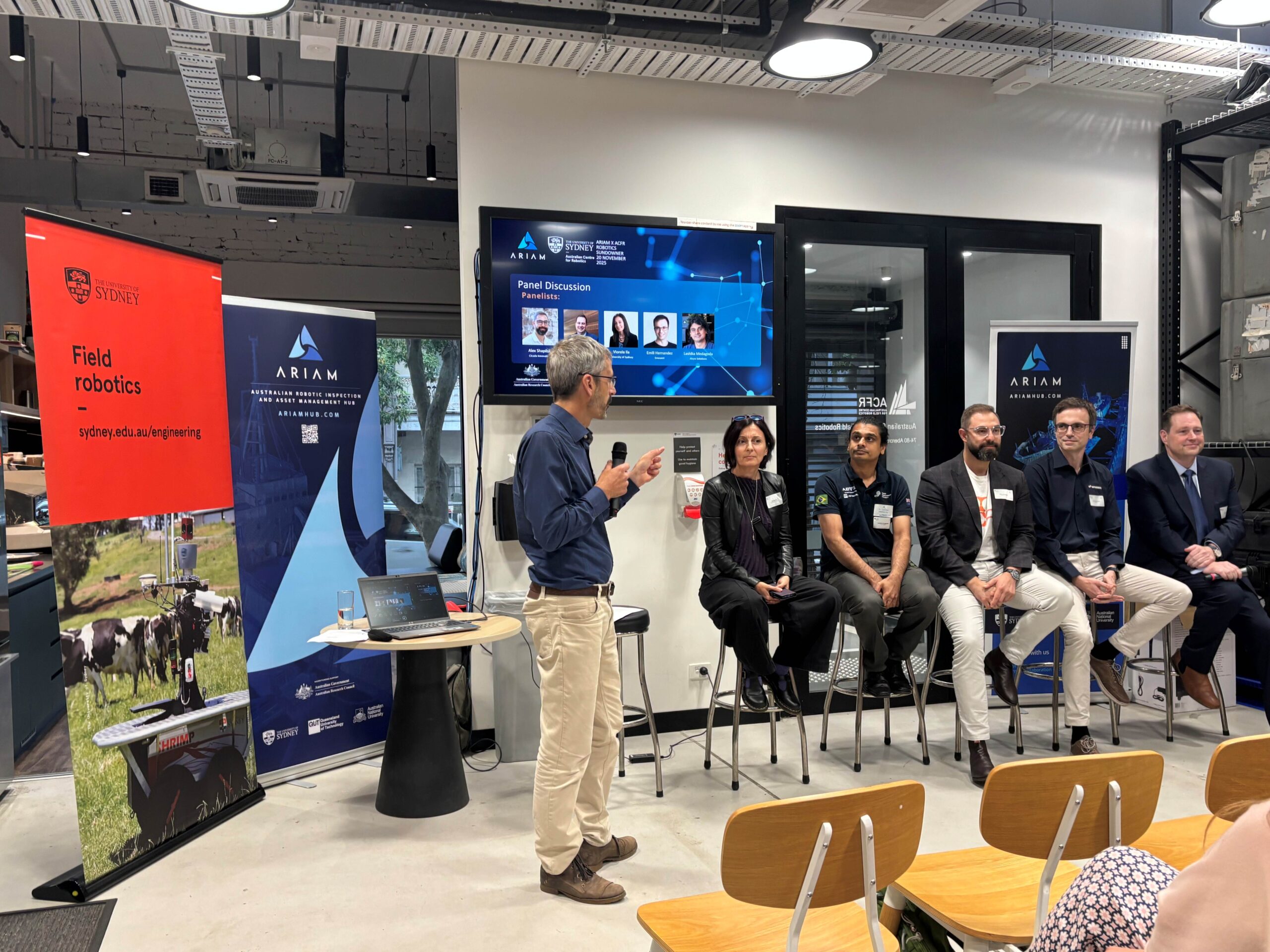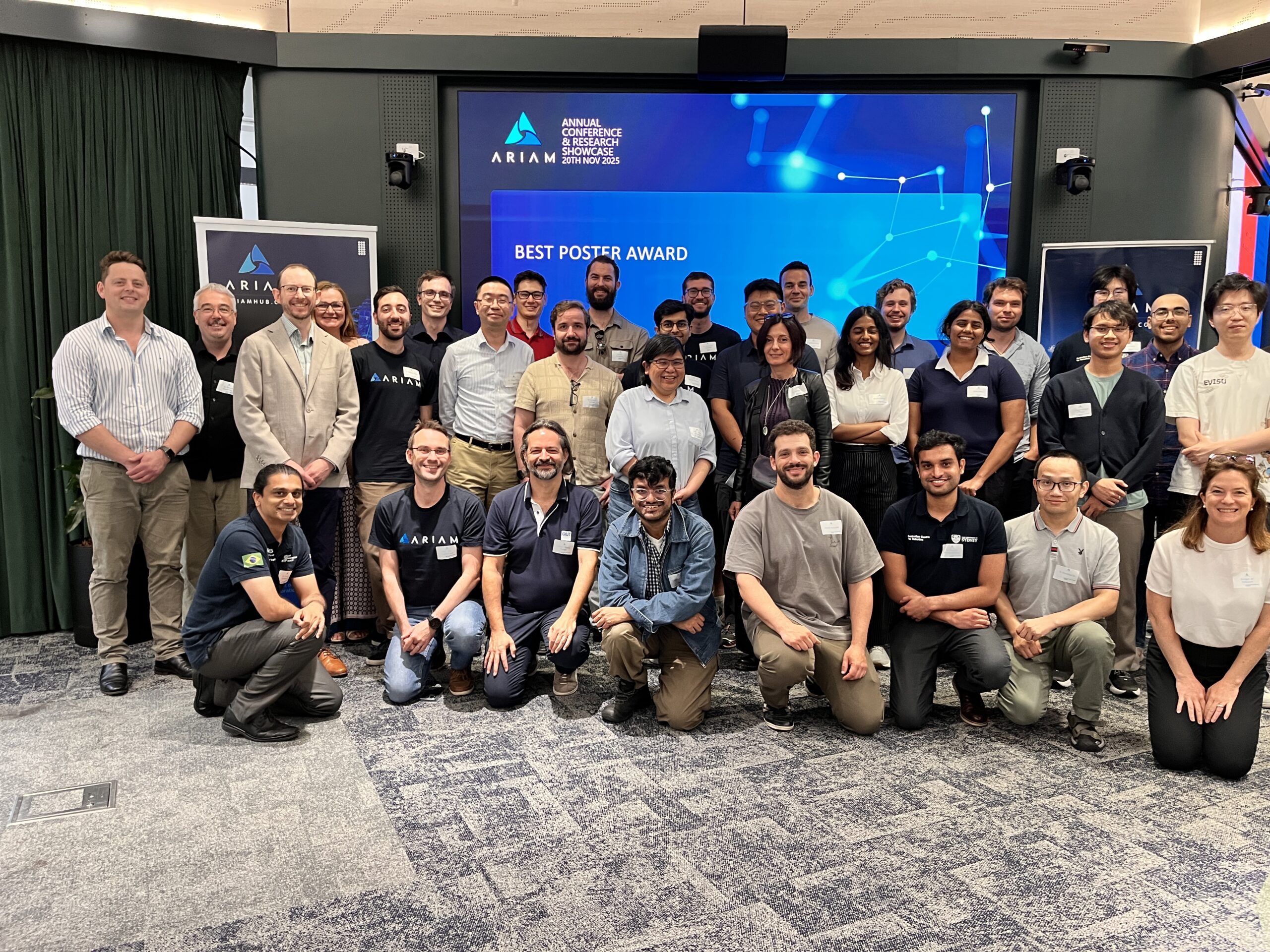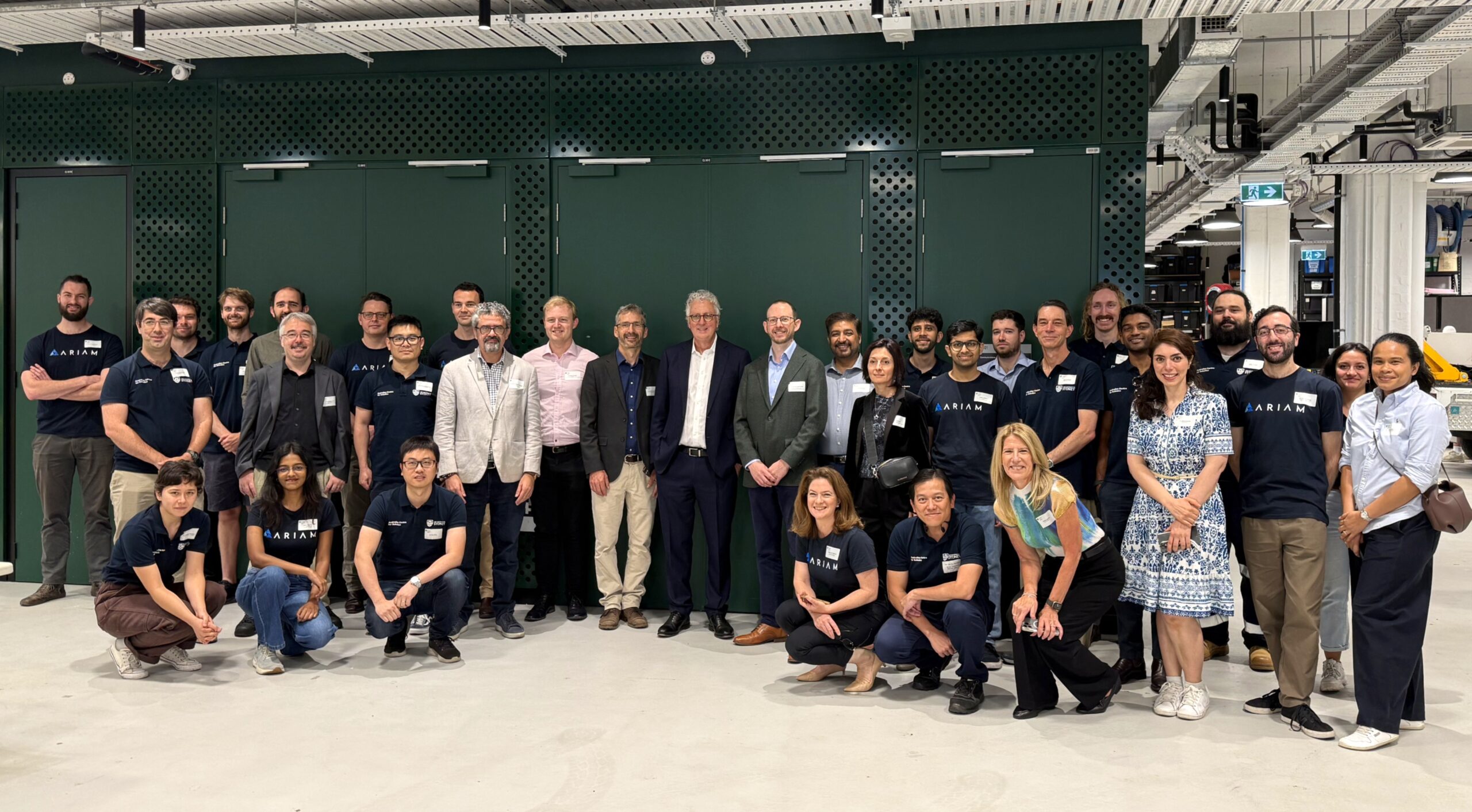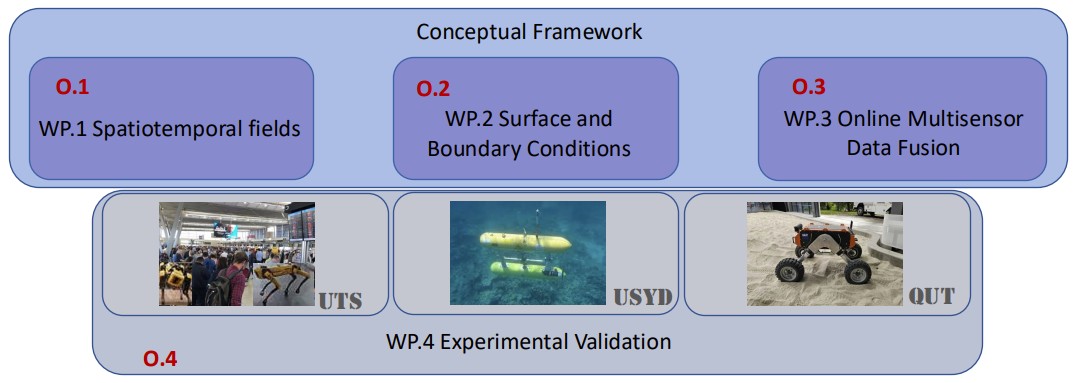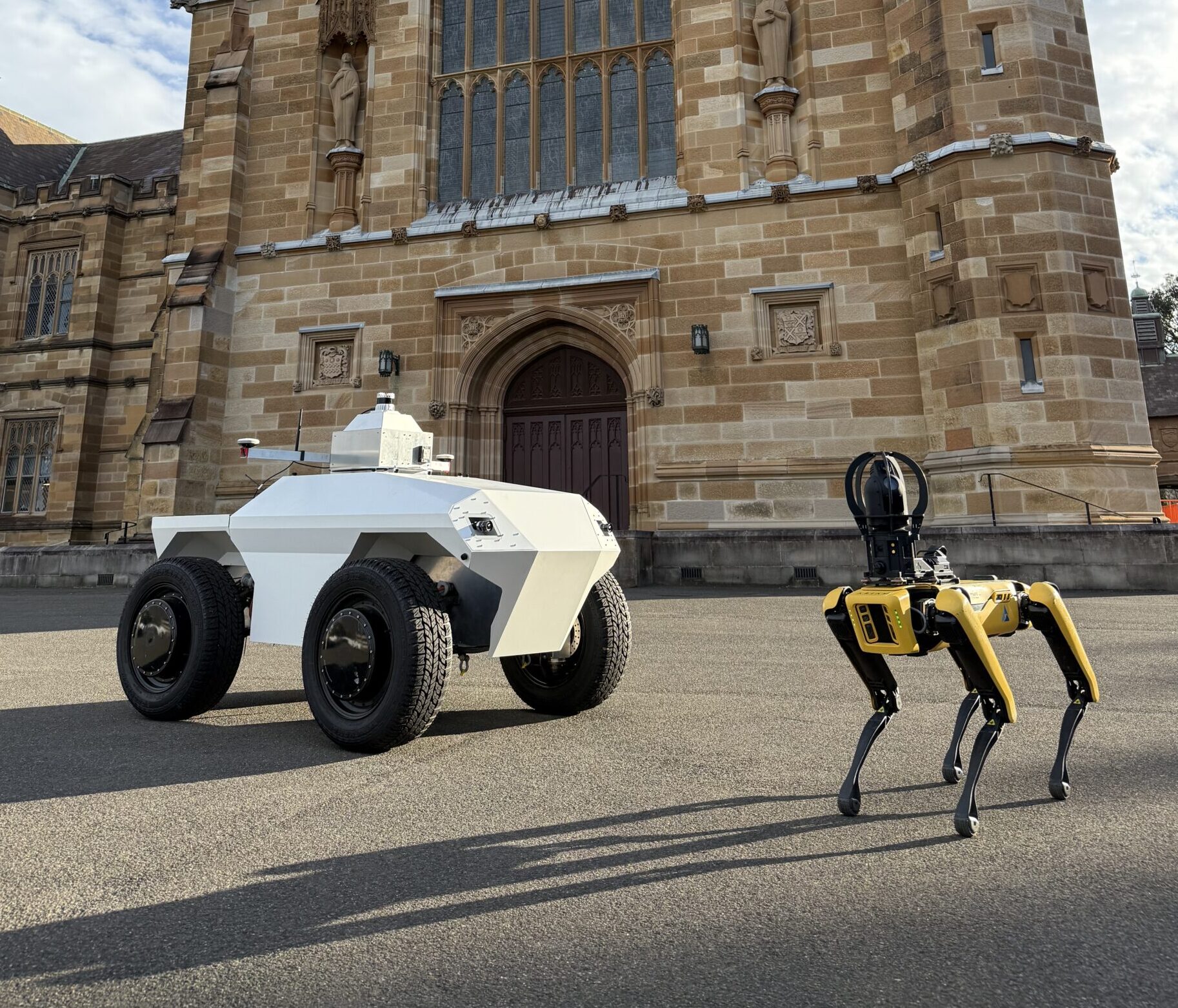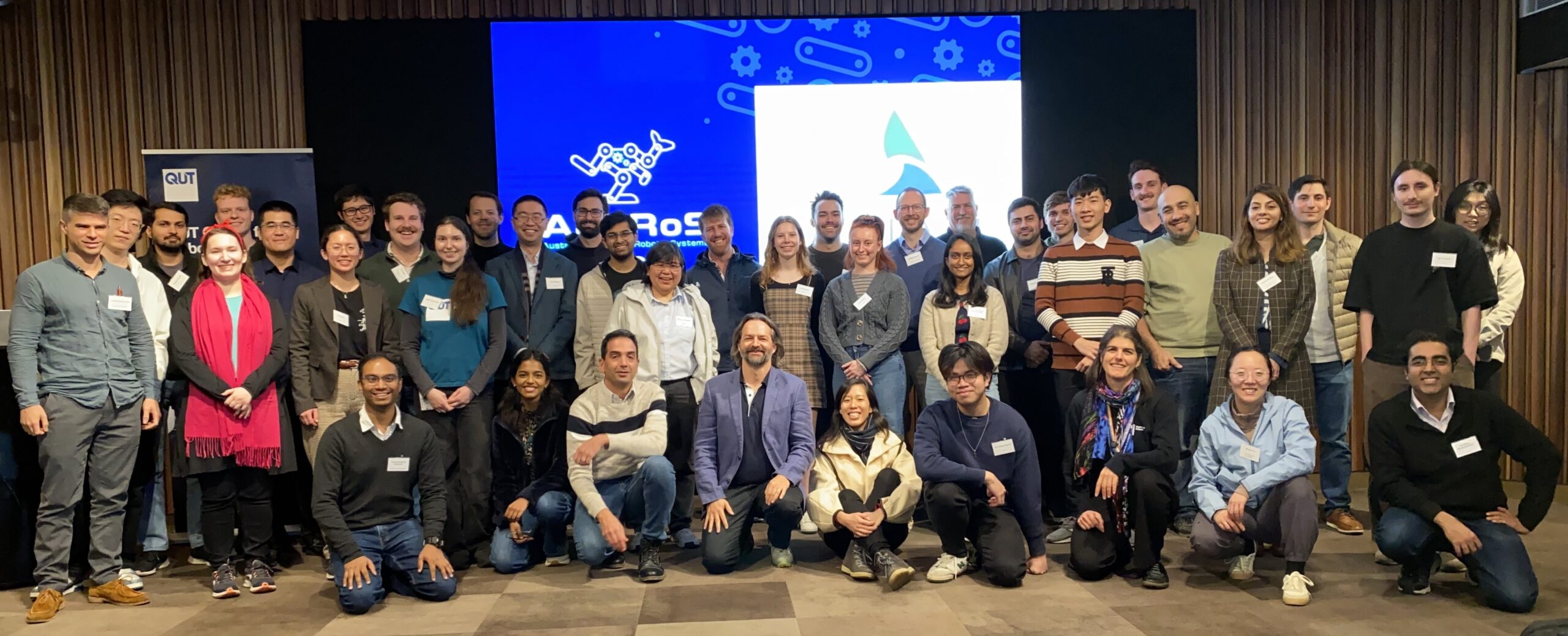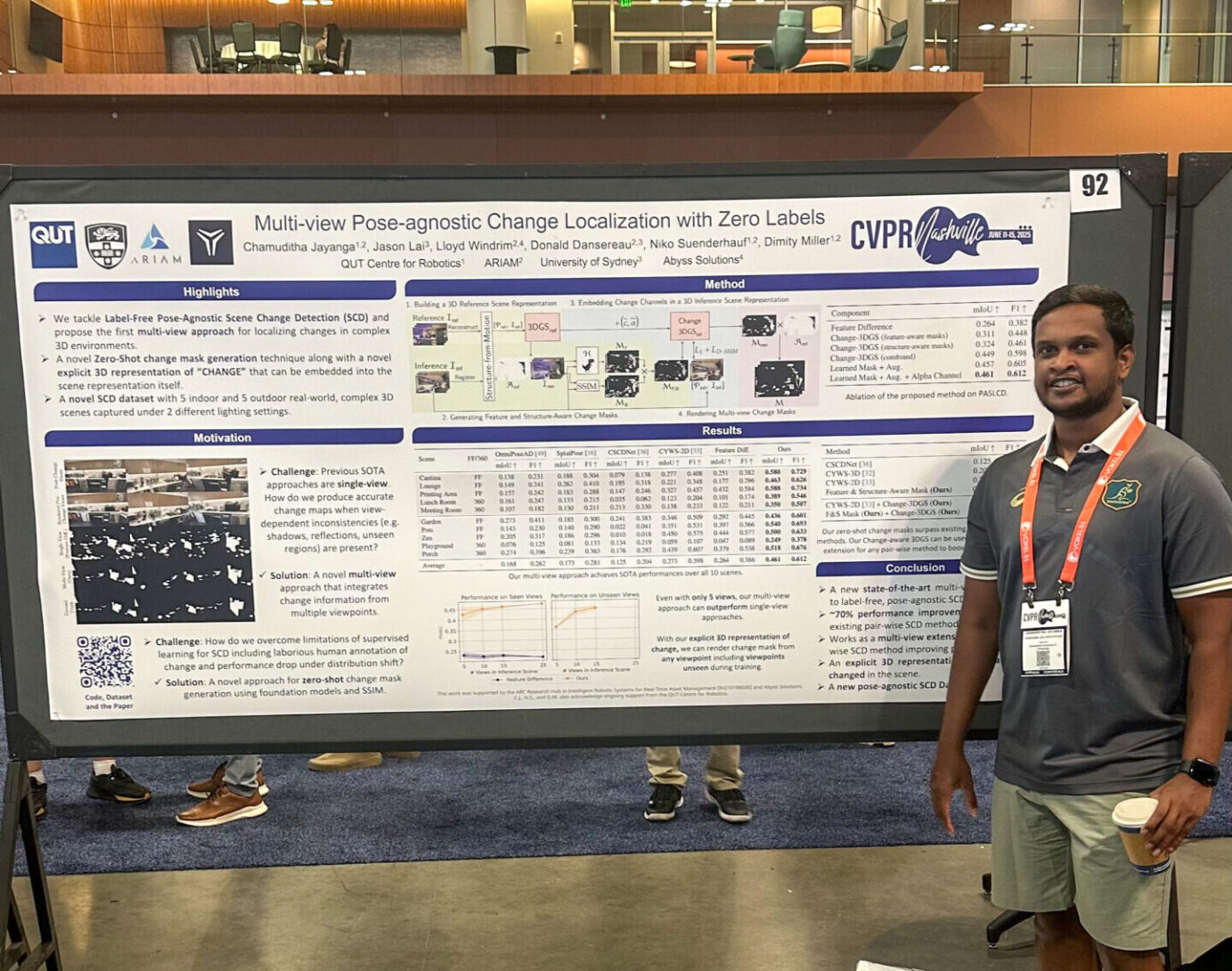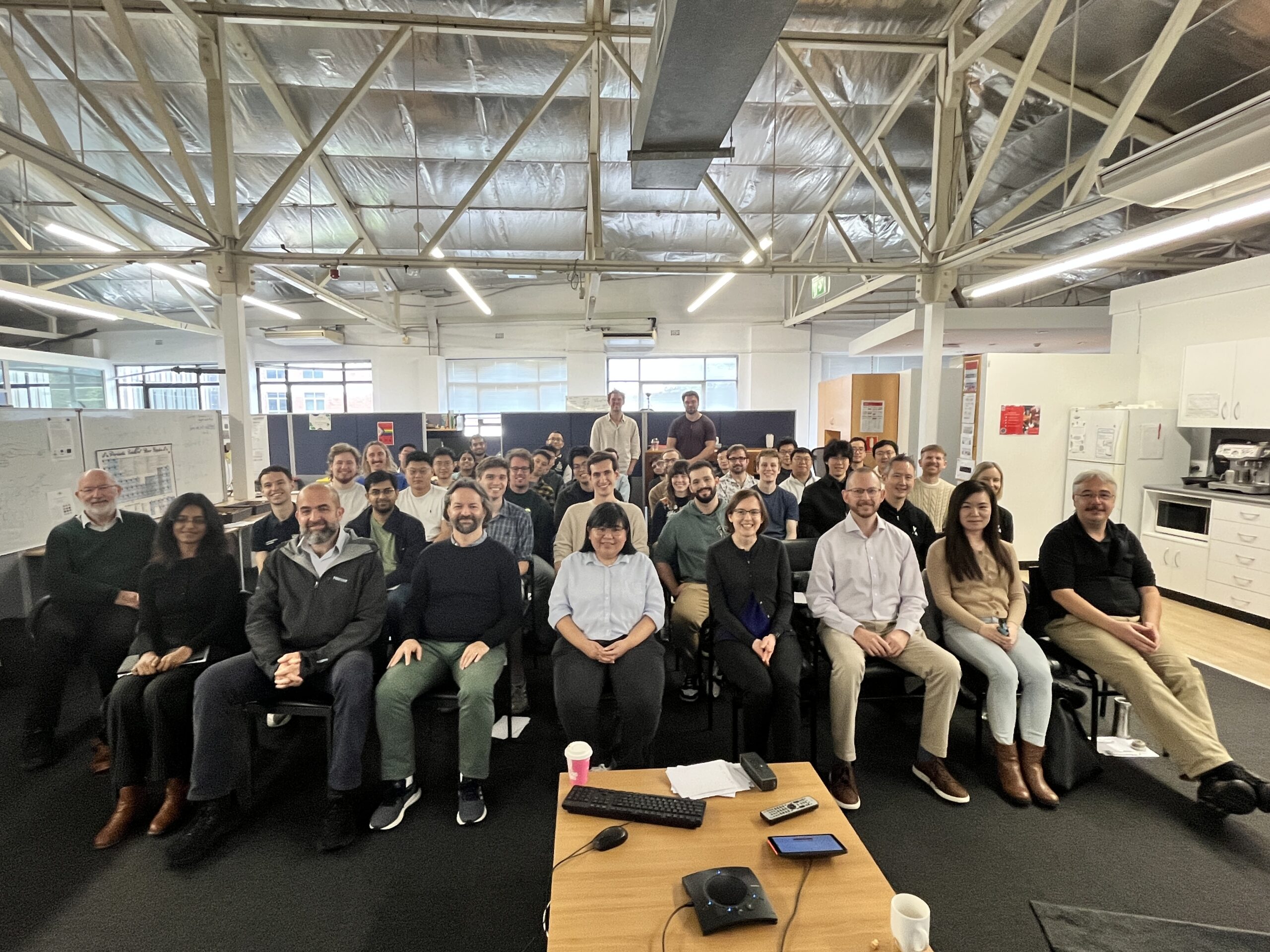How do we turn research into real-world impact? Why great tech doesn’t always get used and how to change that? Where do the most exciting opportunities in robotics and automation lie? How can researchers and industry speak the same language?
These were the big questions explored at the ARIAM x ACFR Robotics Sundowner, held following our Research Showcase on 20 November at the ACFR Labs, University of Sydney.
In collaboration with the Australian Centre for Robotics (ACFR), we brought together researchers, industry leaders, and innovators to tackle the challenge of translating leading-edge research into impact and provide a platform for networking within the Australian robotics community.
David K Martin, (Ai Group) set the stage for the night with a keynote that delivered valuable insights on Australian manufacturing trends, tech adoption, and the pressing skills shortage.
Next, our guest speakers Emili Hernandez, Alex Shapilsky, David Martin, Lashika Medagoda and Viorela Ila were joined by our Deputy Director, Prof. Stefan Williams, who moderated a panel discussion about the whole-of-lifecycle for translating research innovation. The panel shared their expertise and tackled some key questions facing the robotics research sector today.
The proceedings closed with a pitch session featuring Stefan Williams (Seascape), Kaylee Li (Sydney Interplanetary Rover Initiative), Bradley Hastings (John Grill Institute), and Andy Whyte (Adaptive Machine Patterns).
A massive thank you once again to our industry partners for taking the time to join us and share their expertise with the attendees and for everyone who made this event possible.
It was a great night of knowledge sharing and networking. helping to strengthen and encourage future collaboration across academia and industry within the Australian robotics community.
